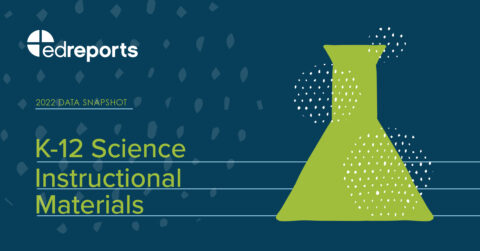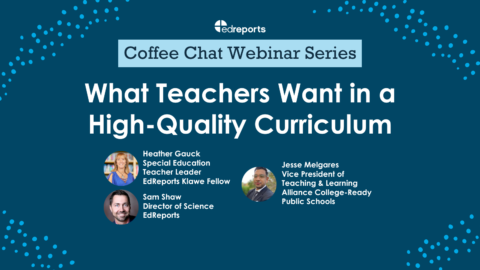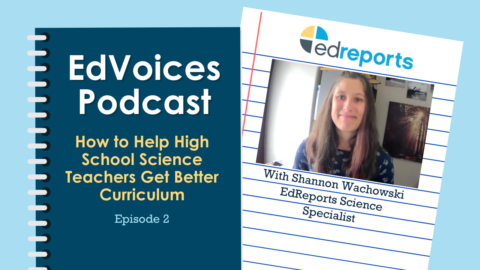Let High School Science Teachers Know They’re Not Alone
Educator Shannon Wachowski discusses the challenges high school science teachers are facing and how EdReports’ reviews of high school science programs can support them.
Latest Resources
article
Data Snapshot: K-12 Science Instructional Materials (2022)
Learn more about the availability and use of high quality K-12 science curriculum in this new report.
webinars-trainings
What Teachers Want in a High-Quality Curriculum
Part three of our Coffee Chat webinar series on the state of the instructional materials market, featuring Heather Gauck, Jesse Melgares, and Sam Shaw.
video
Watch: How to Help High School Science Teachers Get Better Curriculum
Science educator Shannon Wachowski discusses how EdReports’ reviews of high school science programs can support educators.


